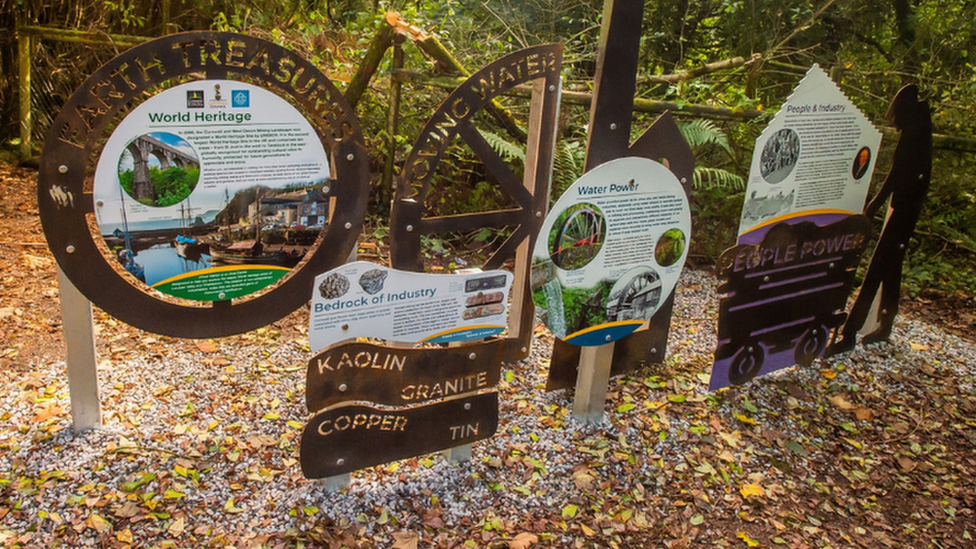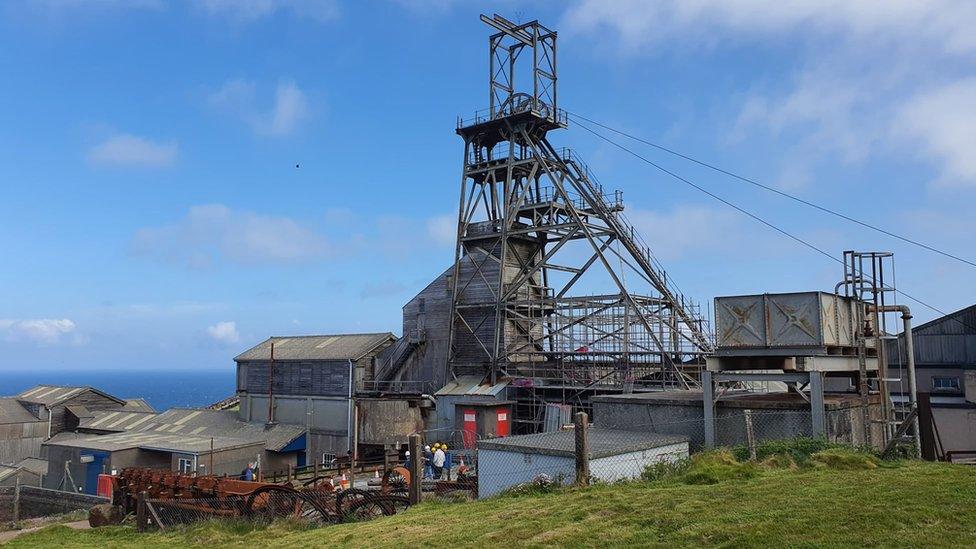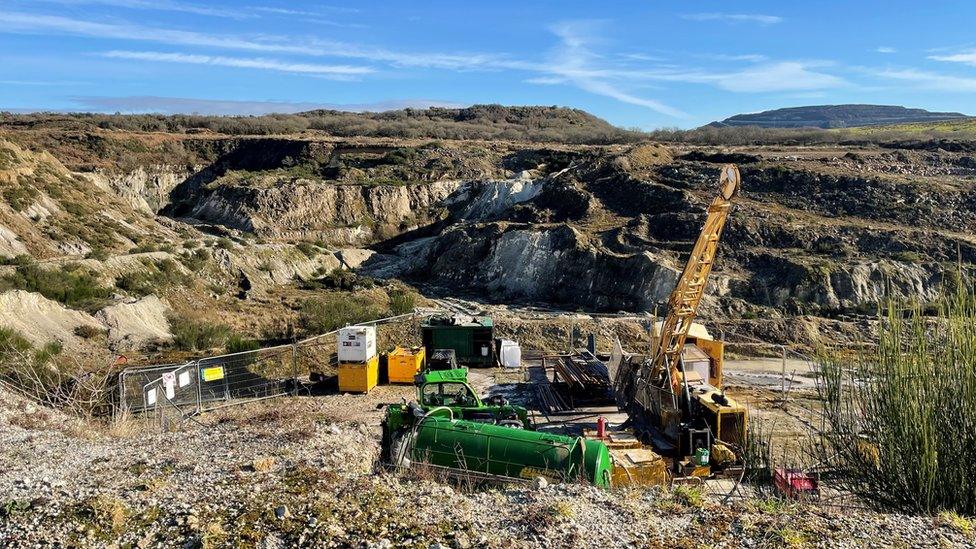Cornish mining heritage celebrated with new boards at Luxulyan Valley
- Published

People are being encouraged to visit Luxulyan Valley to see the new installations
A series of information boards have been installed in Luxulyan Valley in Cornwall to celebrate its heritage as of one of Cornwall's mining heartlands.
The valley was designated as part of the Cornwall and West Devon Mining World Heritage Site in 2006.
Reminders of the valley's copper mining and china clay industries are prominent in the area.
The area is home to Treffry Viaduct, mine buildings, leats, tramways, mineshafts and a waterwheel pit.
Ideas about how to celebrate the valley's heritage were developed after Cornwall Council and Cornwall Heritage Trust secured a grant from the National Lottery Heritage Fund.
Funding from Cornwall Council has enabled these projects to be brought to life.
New installations can also be found at Wheal Martyn Clay Works, including a series of interactive displays and an external 4m (13ft) wide steel structure which provides a distinct World Heritage focus to compliment the story of china clay told at the museum.
Councillor Martyn Alvey, portfolio holder for Environment and Climate Change at Cornwall Council, said: "It is fantastic to see this project come to fruition.
"Luxulyan Valley is a beautiful part of Cornwall, and it has a fascinating history which represents Cornwall's global significance when it comes to mining.
"I recommend that people do go and visit to appreciate what is on offer and celebrate Cornwall's glorious industrial past."

Follow BBC News South West on Twitter, external, Facebook, external and Instagram, external. Send your story ideas to spotlight@bbc.co.uk, external.
- Published27 April 2022

- Published11 June 2021
